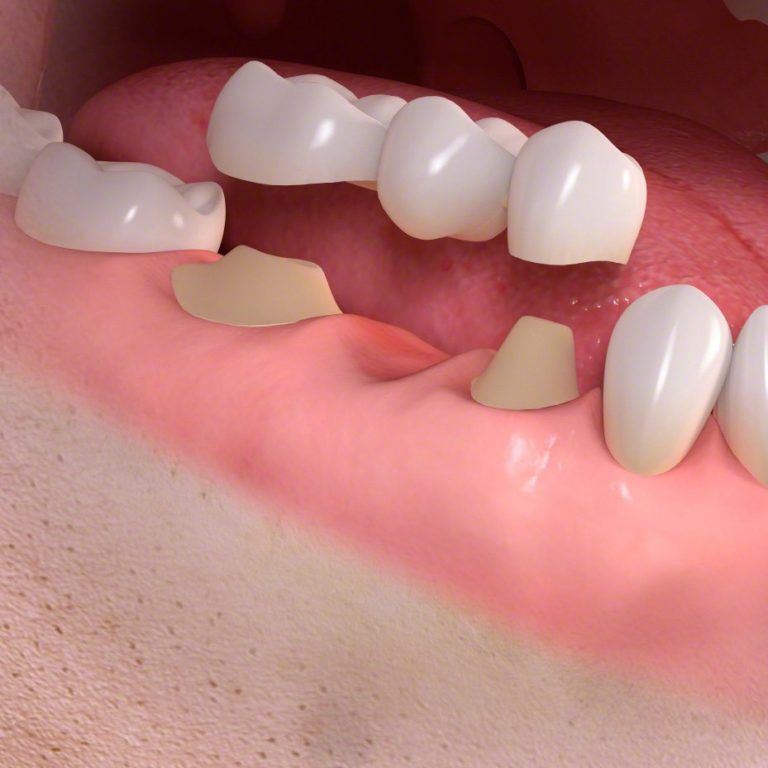Implants vs. Bridges

When a tooth is lost, selecting the best method of replacement is key to restoring oral function and preserving long-term health. At Delaire Dental in New York, NY, Dr. Michael Lee offers both dental implants and fixed bridges—two highly effective options for filling the gap left by missing teeth. While both treatments aim to restore chewing ability, aesthetics, and bite alignment, they differ in technique, longevity, and how they affect surrounding structures. Our practice is dedicated to providing high-quality, individualized care that helps patients choose the solution that fits their medical, functional, and cosmetic needs.
Why Tooth Replacement Should Be Part of Comprehensive Healthcare
Tooth loss is more than an isolated dental issue—it has systemic implications. From a healthcare provider’s perspective, missing teeth can lead to reduced nutrition, compromised digestion, speech difficulties, and even decreased cognitive function in older adults. When teeth are not replaced in a timely manner, bone in the jaw can begin to resorb, leading to facial collapse and the shifting of surrounding teeth. These changes impact airway health, jaw joint stability, and even psychosocial well-being. Choosing the right method of tooth replacement, such as a bridge or implant, is crucial for maintaining structural integrity and supporting patient health in the long term. For patients with chronic conditions like diabetes, cardiovascular disease, or osteoporosis, collaborating with dental professionals ensures that tooth loss is addressed in a way that supports overall medical management.
Signs You May Need a Tooth Replacement Solution
- Missing one or more permanent teeth
- Difficulty chewing or avoiding certain foods
- Shifting of neighboring teeth or bite misalignment
- Changes in speech clarity or pronunciation
- Jaw discomfort or changes in facial appearance
- Tooth sensitivity near a missing tooth space
- History of periodontal disease or dental trauma
Why Understanding the Difference Between Implants and Bridges Matters
A dental bridge is a prosthetic that uses the teeth adjacent to a missing tooth as anchors for a false tooth in between. It’s a non-surgical option that can be completed relatively quickly and is often covered by insurance. However, placing a bridge requires reshaping the healthy teeth on either side of the gap, which can compromise their long-term strength. It also does not replace the missing tooth root, which means the jawbone in that area may continue to shrink over time. Dental implants, by contrast, involve placing a titanium post into the jawbone that functions like a natural tooth root. This not only preserves bone density but also avoids disturbing the structure of neighboring teeth. Implants tend to last longer, support better bone health, and offer a more natural chewing experience. However, they require more time, a surgical procedure, and a higher initial investment. At Delaire Dental, we help patients weigh these pros and cons to make a decision that fits both their oral health status and lifestyle.
How Each Option Works
The treatment timeline and process for bridges and implants differ significantly. Here’s what to expect:
For Dental Bridges:
- Initial Evaluation and Imaging: We examine the surrounding teeth and take digital impressions to ensure the supporting teeth are healthy and positioned properly.
- Tooth Preparation: The teeth adjacent to the missing tooth are reshaped to serve as anchors.
- Temporary Bridge Placement: A temporary bridge is placed while the permanent one is being custom-fabricated.
- Final Bridge Delivery: The permanent bridge is cemented in place, and we check the bite and make adjustments as needed.
For Dental Implants:
- Consultation and Bone Assessment: We perform a comprehensive exam and 3D imaging to assess bone volume and determine suitability for implant placement.
- Surgical Implant Placement: A titanium implant post is placed into the jawbone beneath the missing tooth space under local anesthesia.
- Healing and Osseointegration: The implant fuses with the bone over 3 to 6 months, creating a stable foundation.
- Abutment and Crown Placement: A custom-made abutment and dental crown are attached, completing the restoration and restoring full function.
Preserving Oral Health to Avoid Complex Restorative Needs
Preventing tooth loss begins with daily oral hygiene and consistent dental care. Brushing twice a day, flossing daily, and using antimicrobial rinses help protect both enamel and gum tissue. Early treatment of cavities and gum disease reduces the likelihood of needing a replacement later. For patients with bruxism, wearing a nightguard can prevent cracks or damage to teeth that could lead to extraction. It’s also important to maintain a diet low in sugar and high in nutrient-rich foods that support bone density and tissue regeneration. Regular dental visits allow for early detection of structural or periodontal issues, providing the opportunity for conservative treatment before restoration becomes necessary. Once a tooth is lost, choosing a replacement method that preserves existing teeth and supports the jawbone can significantly reduce the need for future interventions.
Long-Term Results and Quality of Life for Patients
Patients who receive dental implants often report higher satisfaction in terms of comfort, appearance, and stability. Implants mimic natural teeth closely, support surrounding bone and soft tissue, and rarely need to be replaced if well maintained. Bridges, while effective and often more cost-accessible, typically need replacement after 10 to 15 years and can put strain on neighboring teeth. Both options restore a functional bite and confident smile, but implants tend to offer better long-term preservation of the oral environment. With the right aftercare—including good hygiene, regular checkups, and avoidance of damaging habits—either solution can serve as a durable and attractive restoration. The best outcomes are achieved when the treatment choice aligns with the patient’s anatomy, health conditions, and personal goals.
Frequently Asked Questions
Which option lasts longer—implants or bridges?
Implants generally last longer, often 20 years or more with proper care. Bridges typically need replacement after 10 to 15 years.
Are dental implants more expensive than bridges?
Yes, implants have a higher initial cost due to surgery and materials, but they may be more cost-effective over time due to their longevity and low maintenance.
Do implants hurt more than getting a bridge?
Implant placement involves a surgical procedure, but discomfort is usually mild and manageable. Bridges are non-surgical and typically involve less downtime.
Can I get an implant if I’ve had a missing tooth for a long time?
In many cases, yes—but you may need bone grafting if significant bone has been lost. A consultation with 3D imaging will help determine your options.
Will insurance cover implants or bridges?
Most insurance plans cover bridges, while coverage for implants varies. Our office can help verify your benefits and provide clear cost information.
Let Us Help You Choose the Right Path to Smile Restoration
Selecting between a dental implant and a bridge is not just about filling a gap—it’s about choosing the solution that supports your oral and overall health for years to come. At Delaire Dental, we combine advanced technology, clinical expertise, and patient-centered care to help you make an informed decision with confidence.
If you’re exploring your options for tooth replacement in New York, NY, schedule a consultation with Dr. Michael Lee today. Whether you’re leaning toward a bridge or interested in the long-term benefits of a dental implant, we’ll help you find the best solution for your smile, your health, and your life.
